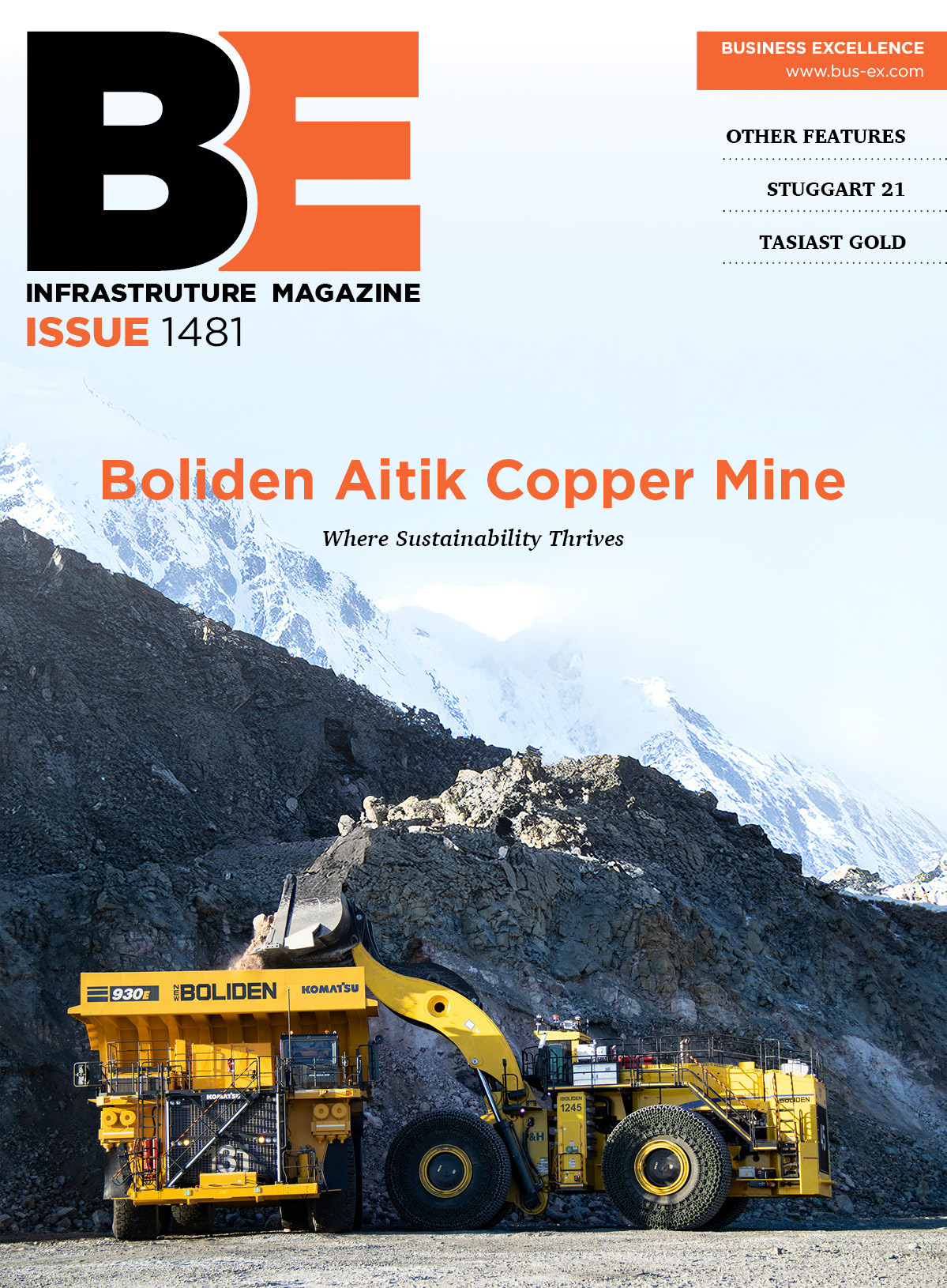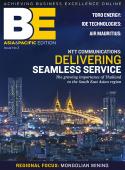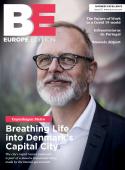Specialist in all styles
The slogan of the great African band Orchestre Baobab applies well to South AfricaÔÇÖs premier firm of architects: its strength lies in its diversity, as TPS.P Architects director Guy Steenekamp explains to John OÔÇÖHanlon.
There are buildings rising up in Johannesburg, South Africa and many other parts of the African continent which, for excellence of design and function, rival the best that can be found in Europe, Asia or America. The stark frontier functionality of a few decades ago is fast disappearing; however, the continentÔÇÖs needs are varied and specialised. An architectural practice here needs above all to be adaptable, and that is where TPS.P Architects scores. It has had a hand in some of the regionÔÇÖs outstanding icons, such as the AngloGold Ashanti headquarters in Johannesburg, the new conference centre in the Tanzanian capital Dar es Salaam and the Marriott Hotel at Accra, Ghana; at the same time it is involved in fundamental infrastructure projects, industrial development and mining.
Like everywhere else in the world, South Africa is beginning to feel the full effect this year of the global turndown in the form of a liquidity crisis, with many projects being put on hold. ÔÇ£They are good to go, but everything is taking just that little bit longer now,ÔÇØ says TPS.P Architects director Guy Steenekamp, whose expertise is in the commercial side of the business. The retail sector is the most buoyant, with projects in what Steenekamp calls ÔÇ£the more out-of-the-way areasÔÇØÔÇöthe coastal regions of South Africa as well as Nigeria, Swaziland, Lesotho and even the Democratic Republic of Congo.
Mining is a sector that is beginning to show early signs of recovery, which will help get a lot of projects moving. There is an enormous housing backlog in South Africa as a whole that will be met partly by massive investment on the part of the government; but the mining industry is also a major provider of housing for its workforce, and these projects tend to be realised more expeditiously than government schemes. ÔÇ£One of our strengths is that there isnÔÇÖt any sphere of architecture that we are not involved in,ÔÇØ says Steenekamp. ÔÇ£We are doing clinics and factories; we are doing new work for the harbours, particularly in the Eastern Cape, which are being revamped and expanded; and we are the master architect for the entire Gautrain project.ÔÇØ
This last project will be worth millions of rand to TPS.P; Gautrain is Gauteng ProvinceÔÇÖs 80km rapid transit link that will ultimately join Johannesburg, Pretoria and the OR Tambo International Airport, at the same time cutting traffic congestion. Having produced the detailed design for three of the lineÔÇÖs ten stations, the pressure is on to get the airport section completed in time for next yearÔÇÖs FIFA World Cup, with the remainder scheduled for 2011.
TPS.P is actively involved in no fewer than thirty-three shopping centres, all at different stages of development. ÔÇ£Retail is becoming one of our stronger core businesses. Offices always have been: we are one of the top three or four practices in South Africa when it comes to large-scale office building. The commercial side is simmering now because of the economic situation, but it will turn around next year, I am quite confident about that.ÔÇØ
It is very difficult to pick out a flagship building when there are so many, but one of the most outstanding has to be the award-winning AngloGold Ashanti head office at Turbine Square. It consists of three buildings, one of them brand new, the other two converted out of an old power station rather along the lines of the UKÔÇÖs Tate Modern in London. The Turbine Hall was built in 1927, the South Boiler house in 1934; both were generating electricity until 1961. It was decided to keep the exterior of the Turbine House, a Johannesburg landmark, as unchanged as possible, however the space inside is essentially a new building, a glass box fitted inside the old walls.
Another very recognisable TPS.P project that helps define the modern city is the Johannesburg Securities Exchange complex at Sandton. Again it comprises three buildingsÔÇöDeutsche Bank, ABN AMRO and the stock exchange itself. Perhaps the most arresting, visually, is the expressionistic Zurich Insurance head office building in Marshalltown, Johannesburg.
Johannesburg may claim to be AfricaÔÇÖs most contemporary city, but some of the most exciting opportunities lie in very different places, according to Steenekamp. Lagos is a good example. Take a fresh look at the chaotic image that NigeriaÔÇÖs former capital has earned for itself and think of the wealth, he says. ÔÇ£There are a lot of powerful people, and they donÔÇÖt have a history of gearing and leveraging projects there; the bigger projects are mostly funded by private equity. We are currently working on office buildings, two shopping centres, a residential precinct and a private home there. We are also involved in a very big long-term land reclamation project in Lagos lagoon, starting this year and privately funded with support from the Lagos State government. It will cover 150 hectares of land, generate 1.5 million square metres of lettable area and provide accommodation for up to 100,000 residents and workers.
ÔÇ£The great thing about Lagos is that it has the critical mass to sustain major projects. ItÔÇÖs a city of 18,000,000 people and there are multi-millionaires living there. The government is beginning to spend money on infrastructure, after neglecting it for many years. I think Lagos State will lead the way in Nigeria.ÔÇØ And, he adds, Nigeria is a good place for South African firms right now: ÔÇ£With our weak currency it is lucrative for us to work in dollar-based economies like Nigeria, whereas for a European firm it might not be so attractive.ÔÇØ
From AfricaÔÇÖs richest states to some of the poorest, opportunities abound. TPS.P has been involved in Tanzania for more than ten years, at first advising on buildings like the Reserve Bank, more recently carrying out the full design for the countryÔÇÖs newest conference centre that hosted a world economic summit in 2008. Additionally, the firm is doing work in CongoÔÇöno longer just the bread-and-butter mining contracts but now mixed residential and retail projects. ÔÇ£The DRC has tremendous critical mass, and thereÔÇÖs a huge demand for almost anything you can deliver,ÔÇØ he says. And now TPS.P has opened a regional office in Mozambique to service the Portuguese-speaking countries.
This year will be fairly flat in terms of revenue and profit, Steenekamp predicts, but not because the work isnÔÇÖt there; 2010 will be a lot different, he believes. For example, TPS.P has been retained by Caterpillar (Africa) to provide architectural services for all Caterpillar premises and new buildings throughout Africa.
TPS.P is growing market share in a market that will gather pace again in 2010. ÔÇ£There are a lot of unbuilt projects, some of which are stunning,ÔÇØ Steenekamp promises.









